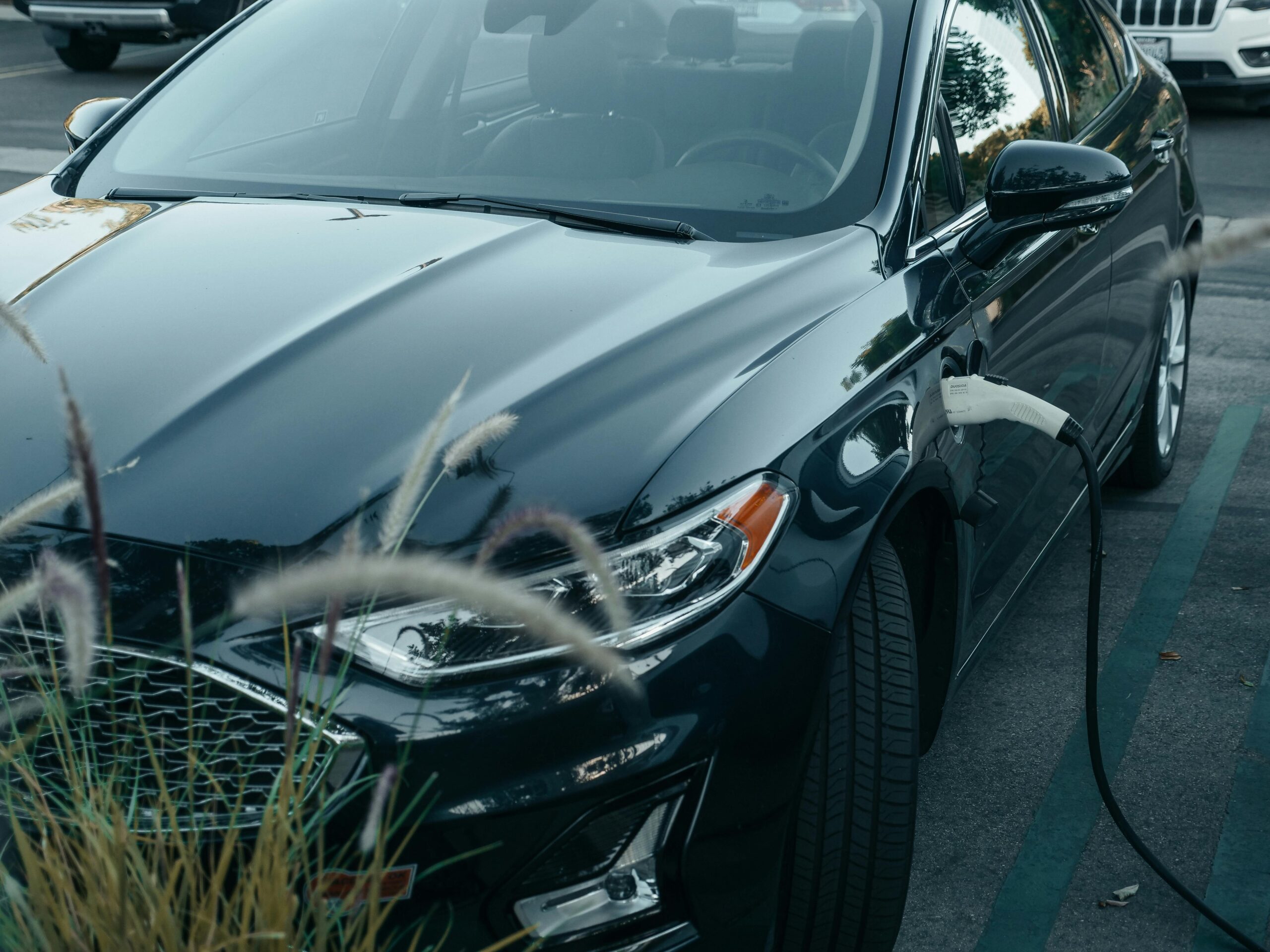Electric vehicles (EVs) have become a political lightning rod. Auto sector lobbying around EVs is at an all-time high, with record spending on both sides of the issue. The top spender is a petrochemical and fuel refining trade organization that has a lot to lose from a shift to EVs. One popular disinformation theme is that there is a federal “mandate” requiring everyone to ditch their gas burner and switch to an EV. The so-called “mandate” that you will hear about refers to a suite of complementary policies comprised of clean vehicle standards as well as incentives, and infrastructure and manufacturing investments to support the transition to cleaner transportation.
The clean vehicle standards are NOT an EV mandate. The EPA emissions standards require automakers to meet tailpipe emissions limits across their entire fleet using a technology-neutral approach. Automakers can meet the goals by manufacturing hybrids, plug-in hybrids, fuel-efficient gas cars, or any other viable technology that reduces tailpipe pollution. If they don’t manufacture cleaner vehicles, they can meet the standards by purchasing credits from manufacturers who do. Even assuming the regulation’s scenario with the most EVs, in the final year of the standards, only 56% of new passenger vehicle sales are expected to be all-electric. That means there will not only be lots of EVs to choose from, but there will still be lots of gas cars, trucks, and SUVs on dealer lots. Plus, the standards don’t impact used car sales. So, if you don’t want an EV, you don’t have to buy one.
The California waivers to the Clean Air Act are another policy that is lumped into this erroneously-named “mandate.” Because of unique air-quality challenges, California has been granted permission to set more stringent air-quality regulations than the federal government’s for over 50 years. It makes sense that California would also have more aggressive goals for clean vehicles to address the health and cost damages of vehicle pollution. California waivers are also under attack in Congress.
Both federal and California standards drive innovation and save consumers money at the pump by creating cleaner, more efficient vehicles. These standards ramp up over time and are designed to encourage and keep pace with vehicle innovation. They are working and will continue to work over the next decade. To put it into perspective, we can look back 10 years when nearly all EV models had a range of less than 100 miles. Today, the average range of many EV models is now over 300 miles. EV and battery technology have come a long way in the last 10 years, and part of this suite of clean vehicle policies is investment in battery manufacturing, which is expected to increase the trajectory of innovation and yield lower-cost batteries with higher energy density, more durability, and less reliance on sensitive minerals.
Standards aren’t the only thing driving the transition to EVs. The global transition to EVs is bigger than U.S. politics, and it is well underway. Over 40 million EVs are currently being driven on roads all over the world, and U.S. automakers sell millions of vehicles and bring in hundreds of billions of dollars in revenue from global sales each year. In order for U.S. auto manufacturers to remain globally competitive, they have to manufacture EVs. The world is changing, and in order to keep up, U.S. automakers need to change too. They know this, which is why Ford, Stellantis, and GM publicly backed the federal EPA standards.
Right now, surveys show that between 25% and 38% of drivers would consider purchasing an EV as their next car. When the question included leasing an EV as an option, that number rose to 68%. If 68% of drivers would consider buying or leasing an EV now, then reaching a goal of 56% of new car sales in the coming years seems very achievable.
Different paths to driving an EV
For drivers who are considering an EV and aren’t ready to jump in with both feet, here are some alternatives to getting in an EV.
Tip #1: Lease an electric vehicle
New cars on any fuel type are a big investment, and committing to a new technology can be daunting. I leased my first EV for two reasons. In 2016, battery range was not what it is today. With an EPA rating of 83 miles, I knew that longer-range models were on their way, and I didn’t want to be locked into a vehicle that would soon be eclipsed by new technology. I was also concerned about the battery longevity. Even though EVs have superior battery and drivetrain warranties (starting at 8 years/100,000 miles), the technology was nascent. It turns out that EV batteries last much longer than anyone expected. Of EVs on the road since I got my first EV in 2016, less than 1% have needed battery replacements, but having a three-year commitment was a great way to become familiar with the technology knowing that the vehicle would be under warranty for the entirety of my driving experience.
Another reason to lease an EV is that some automakers are passing along the federal clean vehicle tax credit through leases. Finance companies affiliated with some automakers offer $7,500 toward leases on EV models, making monthly lease payments very affordable. Plus, off-lease vehicles can be an amazing deal in the used car market, which brings me to my next tip.
Tip #2: Buy a used EV
The affordability of EVs is often listed as a barrier to adoption. We know that once purchased, EVs typically cost much less to power and maintain than gas cars, but many consumers voice fair concerns about the up-front cost of the vehicles. The upfront cost of all new vehicles–gas or electric–is high, which is why most people buy used vehicles. Used vehicles are expected to make up about 70% of vehicle sales in 2025. As more new EVs are sold, more used EVs enter the used vehicle market.
Last year, the average price of a used EV fell below the average price of a used gas vehicle. There is also a little-known federal tax credit of up to $4,000 for used EVs. This tax credit became an instant rebate in 2024 and can now be used at registered dealers as a down payment or to reduce finance costs and monthly payments. Between low prices and tax credits, used EVs can be quite the bargain. There are many late-model EVs with plenty of years and miles left on their warranties that are eligible for tax credits.
Tip #3: Replace your second car with an electric vehicle
If you are one of the 59% of households in the U.S. with more than one car, switching your second car to an EV is an easy way to save money and experience an EV. If you have a place to charge at home, it simply doesn’t get any easier than using an EV for commuting. Similar to your smartphone, you plug it in at night and wake up to a full charge.
Most people drive an average of just under 40 miles, and you never need to build in time to stop at the gas station during your morning commute. Plus, since EV drivers save about 60% on fuel costs, you may find yourself competing with family members over who gets to drive the EV (based on personal experience). If you have concerns about taking long road trips in your EV, simply use your other car. With $7.5 billion in federal funding currently building out a robust network of EV charging stations every 50 miles or less along corridors across the country, EV road trips will continue to get easier and more convenient.
Looking forward
There are challenges along the road to EV adoption. We must be intentional to ensure that EV adoption is accessible and affordable for every driver who wishes to experience the benefits of driving electric. It will take an effort to rapidly build out charging infrastructure nationwide to keep pace with EV sales. We will need to find and scale creative solutions to target drivers who don’t have home charging and build out convenient, reliable, and affordable public charging and workplace charging.
Some drivers have valid concerns about abandoning a familiar technology. One of the most interesting findings in Plug In America’s 2024 EV driver survey is that the vast majority of drivers’ concerns about EVs prior to driving one diminished once they began driving an EV. Concerns about price, battery range, reliability, and adjusting to the new technology simply faded away. Plug In America’s annual EV driver survey has consistently found over the years that 9 out of 10 EV drivers love their cars and intend to stay electric.
When you hear the talk about an “EV mandate” or how someone is coming for your gas car, keep in mind that the clean vehicle standards intend for you to have freedom of choice about what you want to drive. Having more EVs on the road will give you more vehicle choices. EV technology speaks for itself: Electric vehicles are more efficient, less polluting, significantly less expensive to own and operate, and incredibly fun to drive. Indeed, the road to clean vehicles may not be quite as bumpy as you think.

